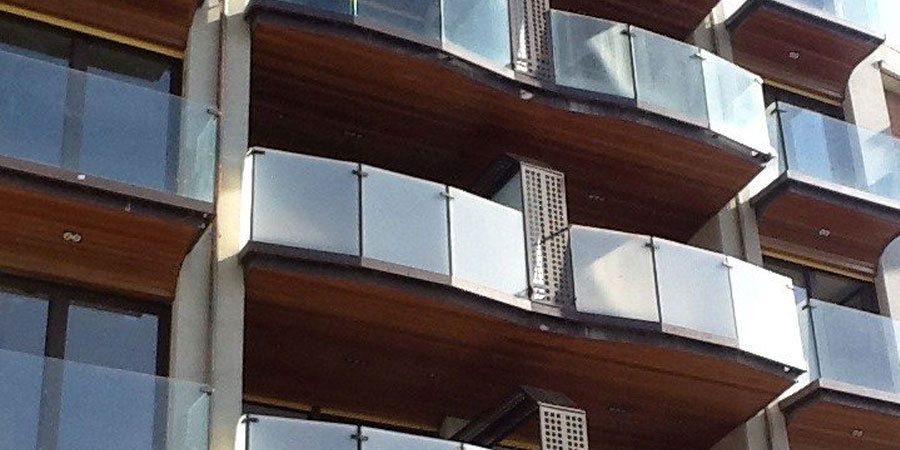Smart Glass in Hospitals & Healthcare Facilities: Enhancing Patient Care & Medical Efficiency
"From ICU privacy to energy efficiency, smart glass is redefining modern healthcare."
Introduction
Healthcare environments must balance patient comfort, privacy, hygiene, and operational efficiency. Traditional hospital designs rely on curtains, blinds, and frosted glass for privacy and light control, but these solutions are difficult to clean, inefficient, and outdated.
Smart glass technology addresses these challenges by offering instant privacy, infection control, energy efficiency, and enhanced patient experiences. From operating rooms to ICU partitions, smart glass is revolutionizing modern hospital design.
Let’s explore how smart glass is transforming hospitals, clinics, and medical offices, improving both patient well-being and healthcare operations.
1. Smart Glass in ICU & Patient Rooms: On-Demand Privacy Without Curtains
Technical Benefits:
✔ Switches from transparent to opaque, providing instant patient privacy.
✔ Eliminates the need for curtains, reducing the spread of bacteria and infections.
✔ Allows nurses and doctors to monitor patients without disturbing them.
💡 Fact: Studies show that replacing hospital curtains with smart glass can reduce contamination risks by up to 50%, improving infection control protocols.
Example Use Case:
- A leading cardiac ICU installs smart glass partitions, enabling doctors to maintain visibility while ensuring patient privacy when needed.
2. Smart Glass in Operating Rooms: Improved Hygiene & Workflow Efficiency
Surgical suites require strict hygiene standards, and traditional curtains or blinds can collect bacteria and dust, increasing infection risks. Smart glass eliminates these concerns while improving operating room adaptability.
Technical Benefits:
✔ Easy to clean and disinfect, supporting hospital hygiene standards.
✔ Prevents unnecessary interruptions, allowing doctors to focus on procedures.
✔ Reduces airflow disruption, unlike traditional partitions that collect dust.
💡 Fact: Hospitals using smart glass in operating rooms report a 30% decrease in airborne contamination risks, improving post-surgical recovery rates.
Example Use Case:
- A pediatric surgery center installs smart glass windows and partitions, creating a sterile, adaptable environment for medical teams.
3. Smart Glass in Emergency & Trauma Rooms: Enhanced Visibility & Privacy Control
Emergency rooms (ERs) require a balance between rapid patient assessment and privacy. Smart glass helps medical teams respond efficiently while respecting patient dignity.
Technical Benefits:
✔ Provides instant privacy for trauma patients, improving patient comfort.
✔ Allows medical staff to maintain visibility, improving response times.
✔ Reduces noise levels, creating a more calming ER environment.
💡 Fact: Studies show that patients feel 40% more comfortable in ERs with privacy-enhancing technology, reducing stress levels and improving recovery.
Example Use Case:
- A Level 1 trauma center integrates smart glass treatment rooms, enabling doctors to switch between transparent and opaque settings instantly.
4. Smart Glass in Mental Health & Rehabilitation Centers
Behavioral health facilities and psychiatric hospitals require safe, adaptable privacy solutions to support patient well-being and security. Traditional locked rooms or solid partitions can feel confining, whereas smart glass provides a balance of openness and privacy.
Technical Benefits:
✔ Improves patient comfort, reducing feelings of isolation.
✔ Enhances safety by allowing staff to monitor patients without intrusion.
✔ Creates flexible spaces for therapy sessions and recovery areas.
💡 Fact: Mental health facilities using adaptive smart glass designs report a 20% improvement in patient satisfaction and recovery experiences.
Example Use Case:
- A rehabilitation center installs smart glass therapy rooms, allowing patients to feel more at ease while maintaining privacy when needed.
5. Energy Efficiency & Sustainability in Hospitals
Hospitals consume large amounts of energy due to 24/7 lighting, climate control, and medical equipment. Smart glass reduces energy costs and carbon footprints by optimizing natural light and temperature regulation.
Technical Benefits:
✔ Reduces HVAC energy consumption by regulating indoor temperatures.
✔ Maximizes natural daylight, lowering artificial lighting needs.
✔ Supports LEED certification and hospital sustainability initiatives.
💡 Fact: Smart glass can reduce hospital energy costs by up to 30%, contributing to greener and more cost-effective healthcare facilities.
Example Use Case:
- A cancer treatment hospital integrates smart glass skylights and windows, optimizing natural light exposure while reducing cooling costs.
6. Smart Glass for Hospital Waiting Rooms & Visitor Areas
Hospital waiting areas often feel sterile and stressful, with limited natural light and privacy concerns. Smart glass enhances patient and visitor experiences by creating more calming, adaptable spaces.
Technical Benefits:
✔ Creates flexible waiting room dividers, offering private spaces when needed.
✔ Reduces screen glare, making digital signage and entertainment more visible.
✔ Minimizes noise disruptions, providing a quieter, more relaxing atmosphere.
💡 Fact: Hospitals that incorporate natural light and privacy-adaptive features in waiting areas report higher patient satisfaction and reduced anxiety levels.
Example Use Case:
- A women’s health clinic installs smart glass partitions in waiting rooms, allowing patients to switch between open and private seating areas.
7. Future of Smart Glass in Healthcare: AI & Smart Automation Integration
The next wave of smart glass innovation will integrate AI-powered automation, supporting personalized patient care and real-time medical data visualization.
What’s Next?
✔ AI-driven smart glass that adjusts tint based on patient needs.
✔ Gesture-controlled smart glass screens, allowing medical professionals to view X-rays and MRI scans without touching surfaces.
✔ Smart glass partitions that change based on patient conditions, optimizing privacy and monitoring.
💡 What’s next? Future hospitals will feature AI-powered smart glass rooms, where privacy, lighting, and information displays adjust dynamically to patient preferences.
Example Use Case:
- A neurology research hospital integrates smart glass patient rooms, where AI adjusts transparency based on patient rest cycles and medical team access needs.
Final Thoughts: Why Smart Glass is the Future of Healthcare
✔ Enhances patient privacy while reducing the spread of infections.
✔ Improves hospital energy efficiency, reducing HVAC and lighting costs.
✔ Optimizes emergency room and ICU visibility for faster medical response times.
✔ Creates more comfortable, modern healthcare environments for patients and staff.
✔ Supports AI-powered automation and future healthcare innovations.
As hospitals continue to modernize patient care and operational efficiency, smart glass is becoming a crucial part of hospital design. Whether in ICUs, operating rooms, waiting areas, or mental health facilities, smart glass provides better patient experiences, improved safety, and greater sustainability.


